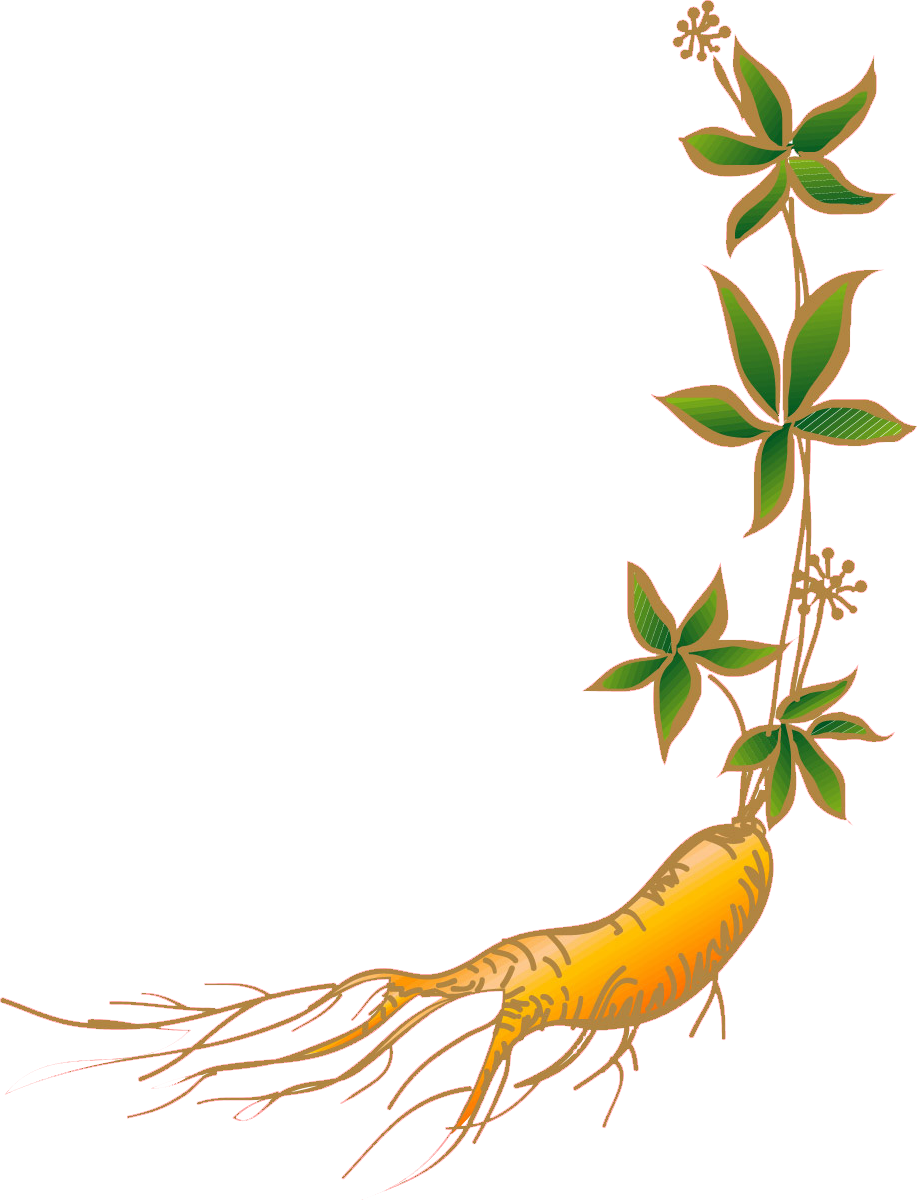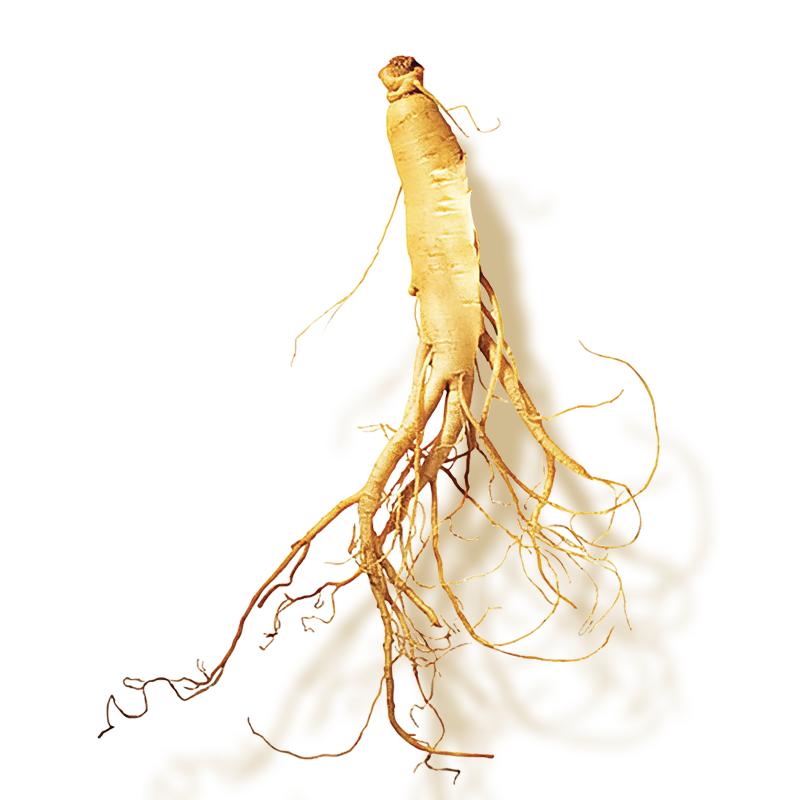

Ginseng (Ren Shen) is a robust tonic herb, suitable for regulating blood pressure, restoring heart function, alleviating neurasthenia, and addressing physical weakness. It also has effects such as phlegm expulsion, appetite enhancement, diuresis, and stimulation. The stem, leaves, flowers, fruits, and by-products of ginseng are raw materials for light industry, which can be processed into products such as ginseng-infused cigarettes, alcohol, tea, crystals, and pastes. Ginseng cultivation is an important project for farmers, providing substantial tax revenue and profits for the country.

Properties and Channels:
Sweet in flavor, slightly bitter, mildly warm, and enters the Heart (Xin), Lung (Fei), Spleen (Pi), and Kidney (Shen) meridians.
Functions and Indications:
Classified as a Qi (vital energy) tonic, it has the effects of greatly replenishing Yuan Qi (original Qi), tonifying the Spleen and benefiting the Lung, generating fluids and quenching thirst, calming the spirit, and enhancing intelligence.
Clinical Applications:
Used to treat various symptoms caused by Lung Qi deficiency and Spleen Qi deficiency. It is effective for heat diseases with both Qi and fluids injured, as well as for diabetes (Xiao Ke). Additionally, this herb can be used to treat symptoms of restlessness due to Qi and blood deficiency.
Ginseng can be used in emergencies, such as for acute collapse, heart failure, and cardiogenic shock, often administered as a decoction of Ginseng (Du Shen Tang) to restore pulse and stabilize collapse. Furthermore, ginseng can treat thirst and symptoms of internal heat leading to thirst.


Ginseng is distributed in China, Russia, and Korea; in China, it is found in the eastern part of Liaoning, the eastern half of Jilin, and the eastern part of Heilongjiang. Ginseng is widely cultivated in Jilin and Liaoning, with introductions in Hebei and Shanxi; it is also cultivated in Korea and Japan.

It is a perennial herb; the rhizome (root head) is short, upright or oblique, and does not thicken into a tuber. The main root is large, spindle-shaped or cylindrical. The above-ground stem is solitary, 30-60 cm tall, with longitudinal ridges and hairless, and has persistent scales at the base. The leaves are palmate compound, with 3-6 leaflets whorled at the top of the stem; juvenile plants have fewer leaves. The petiole is 3-8 cm long, with longitudinal ridges and hairless, and lacks stipules at the base; leaflets are 3-5, often 3 in juvenile plants, membranous, with the central leaflet being oval to long oval, 8-12 cm long and 3-5 cm wide, while the outer pair of lateral leaflets are ovate or rhombic-ovate, 2-4 cm long and 1.5-3 cm wide, with a gradually pointed apex, broad wedge-shaped base, and serrated margins with spiny teeth. The upper surface has a few scattered bristles about 1 mm long, while the lower surface is hairless, with 5-6 pairs of lateral veins, both sides prominent, and reticulate veins not obvious; the petiole of the leaflets is 0.5-2.5 cm long, with the lateral ones being shorter.

The umbel inflorescence is solitary and terminal, about 1.5 cm in diameter, with 30-50 flowers, rarely 5-6; the total flower stalk is usually longer than the leaves, 15-30 cm long, with longitudinal ridges; the flower stalk is thread-like, 0.8-1.5 cm long; the flowers are pale yellow-green; the calyx is hairless, with 5 triangular teeth at the edges; there are 5 petals, which are ovate-triangular; 5 stamens with short filaments; the ovary is 2-celled; the styles are 2, free. The fruit is flattened and spherical, bright red, 4-5 mm long and 6-7 mm wide. The seeds are kidney-shaped and milky white.

Generally grows in deciduous broadleaf forests or mixed coniferous and broadleaf forests at altitudes of several hundred meters.
Soil Requirements:
Ginseng prefers loose, well-aerated, well-drained, and nutrient-rich sandy loam. The best soil is rich in phosphorus, potassium, and humus, typically found in forest soils rich in humus, granite-derived soils, and mountain sandy soils. The pH of the soil is generally between 5.5 and 6.5; alkaline soils with a pH greater than 7, clayey yellow soils, and gray soils are not suitable for growth.
Moisture Requirements:
The soil moisture content should generally be maintained at 40-50%. During the spring when ginseng sprouts, the soil moisture content is about 40%; in summer, with rising temperatures, it should be around 45-50%; in autumn and throughout the growing season, it should be maintained at 45-50%.

Light Requirements:
Ginseng is a shade-loving plant; cool and humid climates are beneficial for its growth. It is tolerant of low temperatures but should avoid direct strong sunlight, preferring scattered and weak light.
Temperature Requirements:
When temperatures drop below 10°C or exceed 30°C, ginseng enters a dormant state. Ginseng is sensitive to high temperatures but can withstand severe cold, safely overwintering even at -30°C. During the growing period, the optimal average temperature range is 15-25°C; when temperatures drop below -6°C, ginseng stem growth ceases. After sowing, the temperature during the sprouting period should be above 10°C; for 1-2 year old ginseng, the temperature during sprouting should be above 12°C.


